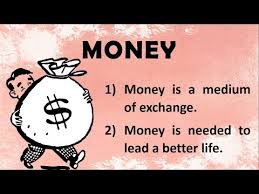Any action a business engages in with the primary intent of turning a profit is considered a business activity. The primary tasks that a firm does to generate income are referred to as business activities. These actions have an impact on the inflow and outflow of cash as well as the net income of the company.
The firm owner develops rules and programs that cover fundamental business operations to assist operate the organization more effectively.
All staff will be able to comprehend how to complete fundamental business activities thanks to these in-depth articles, which will also help the firm run more smoothly. Planning a firm is made simpler by identifying fundamental operations.
Business Activities Explained:
Businesses engage in activities with a profit as their main goal. Salary and salaries are not viewed as business activities because they are seen as expenses for the company.
Examples of Business Activities:
Manufacturing, storage, accounting, sales, mergers and acquisitions, the issue of securities, etc. are some examples of business activity.
1. Business Resources:

Businesses use resources or factors of Production in business activity. Four groups are typically used to categorize them.
Land: Land is more than merely a “piece of land where commercial buildings could be erected.” It also includes natural resources, such as coal, diamonds, forests, rivers, and fertile soil. Landowners are paid rent by those who used it.
The business activity uses both renewable and non-renewable resources. Resources that can be replenished by nature include fish, woods, and water. There is business activity example of non-renewable land resources are mineral deposits like coal and diamonds, which once used are replaced.
There has been a concern in recent years about the rate at which renewable resources are being used. For example, overfishing in the North Sea has led to claims by the international council for the Exploration of the sea that cod stocks are now so low that fishing should stop until they recover. The number of young cod in the North Sea in early 2003 was the lowest in 20 years.
Labour: Labour is the workforce of the business. manual labor Members of the workforce include managers and skilled laborers. For their services, they are paid pay or salary.
The quality of individual workers will vary considerably. Every employee is different, having a different set of abilities, know-how, IQ, and emotional traits.
Training and education can help to raise the quality of human resources. Human resources become more productive if money is invested by businesses or the government in training and education.
Capital: Capital is sometimes described as an artificial resource because it is made by labor. Capital refers to the tools, machinery, and equipment that businesses use. For example, JCB makes mechanical diggers that are used by the construction industry.
The capital that business entrepreneurs employ to launch their ventures is sometimes referred to as capital. If others borrow the capital, the owners will be paid interest.
Enterprise: Enterprise has a special role in business activity. The entrepreneur or businessperson develops a business idea and then hires and organizes the other three factors of production to carry out the activity.
Additionally, entrepreneurs incur risks because they frequently employ some of their own funds to launch their companies. The business owner may lose some or all of the money if the venture fails. Any money that is left over once the business is successful will go to the entrepreneur. This is called profit.
2. Business Functions:

A company is a system because it comprises components that work together to accomplish a goal. Each function is a component of the system. A business is a component of many systems, including the political and economic systems.
What functions does a business carry out?
1. Production:
Production entails converting raw materials into a finished good or a provision of a service. The production process consumes the majority of a company’s resources. An example of production can be seen on a building site where houses are constructed, in a dental surgery where dental treatment is given, and in a coal mine where coal is extracted.
2. Marketing:
Due to increased corporate competitiveness, marketing has grown to be of utmost importance in recent years. It is focused on discovering and meeting consumer demands. Market analysis, advertising, packaging, promotions, distribution, and pricing are a few examples of marketing activities.
3. Finance department:
The management of finances inside a company is the responsibility of the finance department. It has a number of important duties. This includes recording transactions, producing documents to illustrate the performance of the business activity and its financial position, and controlling the flow of money in the business.
4. Administrative tasks:
Dealing with inquiries, communicating messages,s and producing documents for the workforce are all examples of administrative tasks.
5. Research and development (R&D):
R&D involves technical research, for example, research into a new medicine or a new production technique. R&D can be very expensive. Consequently, many businesses do not have an R&D department but rely on n adapting new products and new technology developed by other companies.
In a large business, these functions should be easy to identify. However, a self-employed window cleaner will also carry out these functions.
- Production – cleaning windows
- Marketing – distributing business cards to potential customers.
- Administration – dealing with inquiries from potential customers and recording their personal details in preparation for a first visit.
- Management of human resources involves hiring and controlling temporary workers while business is brisk.
- Finance – keeping records of all financial transactions.
Business activity is highly integrated. For instance, marketing initiatives have a significant impact on production. It will be necessary to make more if marketing is successful and more of the product is sold. The finance department, for instance, will also keep a close eye on how much money is spent by other departments.
3. What does business activity produce?
Production of a good or service is the end consequence of any business activity. Consumer Goods are those which are sold to the general public. They fall into two categories:
Durable goods such as cookers, televisions, books, cars, and furniture can be used repeatedly for a long period of them.
Non-durable goods such as food, confectionery, newspapers, and shoe polish are used very soon after they are purchased. some of these goods are called fast-moving goods, such as soap, crisps, and cornflakes.
Capital Goods are those goods purchased by businesses and used to produce other goods, Tools, equipment, and machinery are examples of capital goods.
The supply of services has grown in recent years. Banking, insurance, hairdressing, car valeting and gardening are examples of this type of business activity.
Business activity also results in the production of waste materials. Most waste is useless and some waste, like radioactive nuclear waste, is very dangerous and expensive to dispose of.
Some production techniques result in by-products that can be sold. For example, the brewing process generates yeast which is used by the producers of Marmite.
4. External factors – Business Activity:
Several external forces have an impact on business activities.. These are beyond the control of the individual business. In some cases, they constrain a firm’s decisions and may prevent its growth and development.
The government – Business activity is heavily influenced by the government. In most countries, the government will be in favor of business development. This will be aided by a judicial system where the law is upheld by everyone and criminals are subject to punishment. A nation also requires an infrastructure, which includes telecommunications, roads, railways, hospitals, and schools. Some of these items may be provided by the state.
Government policy can also influence business. Profits and a variety of the commodities and services that businesses create, for instance, are taxed.
The economic climate may be an effect on business activity. For example, over the period (1993-2003) the UK economy was relatively stable. Interest rates and price increases were relatively low, whilst unemployment fell steadily. These stable economic conditions allowed business activity to flourish. During this time the best performing economy in the EU was the UK.
World events can influence business activity. The attack on the Twin Towers in New York in 2001 and the military action against Iraq in 2003 affected a number of industries. There was a fall in the number of passengers traveling by air in many countries. This affected the aviation industry.
There was also a fall in the number of holidaymakers which affected the tourist industry. It often takes many years for a business to recover from such events. In some cases, they may fail to survive and go bankrupt.
Some individuals form pressure groups: For example, Transport 2000 is a pressure group that promotes ways of reducing the environmental and social impact of transport. It aims to reduce the use of cars and encourage individuals to use public transport, walk, and cycle. If Transport 2000 is influential, the car industry is likely to be adversely affected.
Consumers’ tastes change: In recent years there has been an increase in demand for garden products. Gardens and gardening have been popularised by a number of television, and social media programs on gardening. The desire for vegetarian and vegan meals has also increased. Increasing numbers of people are opting for non-meat diets.
Changes in population can affect the demand for products and the supply of workers. For example, the aging of the population in the UK or USA has meant an increasing number of people aged or over still looking for work. It has also given opportunities to businesses with products aimed at this age group, such as Saga holidays.
Competition – Most businesses face competition from other firms. Rivals’ activities often have an influence on their operations. Following the introduction of the National Lottery in the UK a number of firms in the gaming industry, such as Littlewoods the pools company, and Ladbrokes the betting shop chain, suffered reductions in turnover.
Social factors may influence business activity from time to time. For example, the roles of women in society have changed considerably in recent years. This has meant that more women have become involved in business management and business ownership. As women have started returning to the workforce, some firms have also prepared to provide creche services.
Environmental factors have had a major effect on businesses in recent years. Some now use recycled materials in their manufacturing processes to reduce costs. Certain businesses have tried to manufacture products that are environmentally friendly in order to boost sales.
Legislation and regulation may influence business activity. This may be in the form of government-imposed laws, EU regulations, and independent bodies set up by the government to regulate industry or industry self-regulation.
5. Satisfying needs and wants:

The success of business activity depends on many factors. The most important is to supply a product that consumers want to buy. Businesses must satisfy consumers’ NEEDS and WANTS to be successful. People’s needs are limited. They include things that are needed to survive, such as food, warmth, shelter, and security.
People also require love and other psychological and emotional things. Wants, however, are infinite. People constantly aim for a better quality of life, which might include better housing, better health care, better education, longer holidays, and more friends.
Markets:
The goods and services produced by businesses are sold in the market. When buyers and sellers interact to exchange products and services, a market is present. Buyers and sellers may occasionally come together to do the exchange at a predetermined location. For example, many villages and towns have a regular open-air market where buyers and sellers exchange goods and services. Also, buying and selling can be carried out over the Mobile phone.
For example, the First Direct banking facility allows customers to conduct nearly all of their banking business over the internet. Buying and selling can also take place in shopping centers, in newspapers, internet, through mail orders, and more recently, through television and the Internet.
The goods and services of most businesses are bought by Costumers and used by Consumers to satisfy their wants and needs. Some of the markets listed below can be of interest to a business.
- Consumer goods market – where products like food, cosmetics, and magazines are sold in large quantities.
- The market for services – these are varied and could include services for individuals, such as banking, or services for industry, such as cleaning.
- Capital goods markets – where items used by other businesses are bought and sold, such as machinery.
- Labour markets – where people are hired for their services.
- The housing market – where people and institutions borrow and lend money, such as commercial banks.
- Commodity Markets – where raw materials such as copper and coffee are bought, mainly by the business.
6. Specialization:
One feature of modern businesses is Specialization. This is the production of a limited range of goods by an individual, firm, region, or country. Specialization can take place between firms. For example, McDonald’s provides a limited range of fast foods, Ford manufactures cars, Heinz processes food products, and MFI manufactures and sells furniture products.
Examples of regional specialization might be Kidderminster, which specializes in carpet production, Stoke-on-Trent, which produces pottery, and Kent, which is one of the country’s main hop growers. Different countries also specialize. For example, it could be argued that Scotland specializes in the distilling of whisky, Saudi Arabia in oil extraction, and South Africa in the supply of gold.
Specialization within a firm is an important part of production. Departments specialize in different business activities, such as marketing, purchasing, personnel, and finance. People specialize in different tasks and skills. This is called the Division of Labour and allows people to concentrate on the task or skill at which they are best.
In business activity, production is divided amongst workers, who each concentrate on a limited range of tasks. For example, the building of a house involves an architect drawing up the plans, a bricklayer building the structure, a joiner undertaking woodwork, a roofer laying the tiles, etc. It is argued that the division of labor raises the productivity and efficiency of business and the economy.
There are several causes for this:
Advantage:
- Workers can concentrate on the tasks that they do best, leaving other tasks to more specialist workers.
- Long-term task completion helps people become more skilled. It is also possible to develop a brand new skill.
- Time is saved because workers are not constantly changing tasks, moving from one area to another, or collecting new tools.
- Production organization becomes simpler and more efficient.
Disadvantage:
- Work can become tedious and boring. This can result in poor worker motivation with the likelihood of a higher rate of absenteeism and increased staff turnover.
- When one stage of production depends on another, issues can also arise. Production might stop if one stage malfunctions.
- Over-specialization can pose problems when there is a change in demand. If people are only competent in one skill they may have to retain it, causing delays in production.
7. The importance of money – Business Activity:

Anything that is widely used as a medium of exchange is considered money. It is essential for the smooth exchange of goods and services in markets and helps specialization.
Without money, goods have to be exchanged using a Barter System. This involves swapping goods directly, which is inefficient. It is necessary for the wants of individuals to be perfectly matched. Searching for the perfect match in a barter deal can be very time-consuming.
Putting a value on other items without money is similarly challenging.. In addition, giving change can be a problem when the values of the goods being exchanged do not match exactly. Money also has a number of other functions. It:
- allow individuals to save some of their income and buy goods and services at a later date;
- enables all goods and services to be valued in common units, for example, a house that cost $50,000 is worth exactly 10 times more than a car which is valued at $6,000;
- allows payments to be deferred, ie goods can be bought and payment made at a later date.
The definition of the money supply varies. No financial asset has all the characteristics or fulfills all the functions of money perfectly. In the UK, two measures tend to be used by the government. MO is a ‘narrow’ measure. It includes notes and coins in circulation, cash in banks’ tills, and cash held for operational reasons at the Bank of England. M4 is a ‘broad’ measure. It includes MO plus a wider range of financial assets.
These include money held in bank accounts by the private sector and building society deposits. Cheques, debit cards,s and credit cards are not money. They are a means of transferring money from one account to another.
8. Classification of Business Activity:
Business activity is often classed by the type of production that takes place.
Primary Production includes activity that takes the natural resources from the earth, ie the extraction of raw materials and the growing of food. Mining, fishing, farming, and forestry are examples of primary business activities.
Secondary Production – Manufacturing, processing, and construction are all forms of secondary production that turn raw materials into finished commodities. Car production, distilling, baking, shipbuilding, and office construction are examples of secondary sector activity.
Tertiary Production includes the provision of services. Hairdressing, distribution, security, banking, theatre, and tourism are all examples of business activity in this area. Other methods of classifying business include:
- size
- geographical area
- sector
- ownership
9. What are the trends in Business Activity?

Business activity does not follow a constant pattern. Different industries grow and decline over time. In the UK & USA, some major changes have occurred in the structure of the economy.
Before the Industrial Revolution, most of the UK’s & USA’s resources were used for primary production. During the 19th century, secondary production expanded substantially. The Industrial Revolution resulted in a growing quantity of resources being employed in manufacturing.
Over the last fifty years, tertiary production has grown at the expense of secondary production. The decline in manufacturing is often called De-Industrialisation.
The process of de-industrialization has resulted in the decline of some once prosperous industries, such as shipbuilding, textile, steel, and engineering. Certain reasons have been put forward to explain the decline including:
- changes in consumer demand;
- a lack of competitiveness among UK manufacturers;
- increasing competition from overseas manufacturers;
- a lack of investment in manufacturing;
- trade-union restrictive practices;
- unhelpful government policy
In contrast, service industries now account for over 70% of the UK’s national income. Financial services, personal services, household services, and the leisure industry are just some growth areas.
For example, in the late 1990s and early 2000s, the profile of the football industry was raised significantly. A number of clubs floated on the stock exchange and the amount of money flowing into the industry rose.
Indeed, in 2003 a Russian billionaire took over Chelsea PC and injected millions of his own money into the club. Media interest increased attendances at matches in the Premier League was high and commercial activities began to flourish.
The overall trend in business activity suggests growth in services at the expense of primary and secondary production.
Car needs to be taken when identifying trends from figures, For example, output in one particular service industry may be growing but employment figures may be falling. This could be because businesses in the industry are replacing workers with technology or are reorganizing to reduce the workforce. However, employment figures do show clearly the changing pattern of business activity.
FAQ:
What is Business Activity?
Any action a business engages in with the primary intent of turning a profit is considered a business activity. This is a broad phrase that refers to all of the economic operations that a corporation engages in while conducting business.
What is a business activity description example?
Business activity examples – Business operations are the actions taken by organizations in order to generate revenue and maintain operations. Examples include manufacturing, selling, buying land, buildings, and equipment, buying other businesses, investing in marketable assets, and getting loans from financial organizations.
What is the Business Activity code lookup?
A business activity code in the US is a six-digit code that categorizes the kinds of goods and services a company provides. It is also known as a business code or a professional activity code. This is what? It classifies firms according to their industry and activities.
There are actually three of these codes; the PBC and IRS business activity codes make up the first two. Fortunately, both of these codes make use of the NAICS codes, which are reviewed and updated every five years and use the same designations. You can use these numbers interchangeably because they have been so well-standardized.
Visit the North American Industry Classification System page of the Census Bureau to find a company’s or industry’s NAICS code.
Where do I find my Business Activity code?
The guidelines for IRS Schedule C (Form 1040), pages 17 to 19, contain a list of Principal Business or Professional Activity Codes for sole proprietorships.
What is a business that performs an activity for a fee in simple words?
A service business is a company that offers a paid service.
Is this activity a qualified trade or business?
A trade or business that complies with Section 199A is one that:
Qualified business income is described in Section 199A(c)(1) as the total of the taxpayer’s net qualified items of income, gain, deduction, and loss with respect to any qualified trade or business.
A qualified trade or business for the purposes of this subsection, “qualified trade or business” refers to any trade or business other than those in the following categories: (A) trades or businesses that provide services in the following categories: accounting, actuarial science, engineering, architecture, health, law, performing arts, etc.
What to Read Next:
Business activity code – business activity – vtech busy learners activity cube – a business that performs an activity for a fee- where do I find my business activity code- is this activity a qualified trade or business – what’s business activity – business activities – business activity description example – business activity examples





